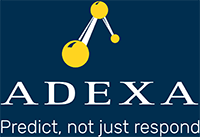Not All UX are Created Equal
Traditional software applications use UX to give control to the users to navigate through the issues and problems that they are alerted to. Consider a typical automobile, the windshield allows you to sense the dangers ahead and the steering wheel, brakes, gas pedal etc. help you to avoid potential issues. Very little intelligence is built into the user interface until recently, when the user interface warns you about cars on the side or getting too close to the car in front of you. Some even take actions and perform automatic braking. The latter is an indication of intelligence built into the system rather than just providing visibility and notification. Most S&OP solutions give you “visibility” in the form of what could happen and/or warn you about a possible event in the future. The actual decisions must be made by the users. In other words, performing manual planning in a very complex world of millions of variables.
Systems should be able to do more. An intelligent UX can guide the user to see issues that are not necessarily visible. For example, one’s driving habits increase the risk of accidents. Another example is, when there is a lot of traffic or construction areas, driving at high speed is risky and could cause undesired results. Some insurance companies recommend the use of devices that monitor sudden speed changes to have a better understanding of driver’s habits.
Navigating through a typical supply chain requires both system and human intelligence. Machines can help to identify underlying issues that are on-going and help the user understand them and know what the causes are. When a driver reduces speed, it is a safe thing to do but not necessarily the optimal action. Likewise, in a supply chain, users often make decisions that are safe but not optimal. For example, they may increase inventory to be safe rather than knowing what the optimal level should be. The latter can easily be recommended by the system. An intelligent UX would tell the user, “You are now making more than what is needed.” Such a decision requires the system to be intelligent enough to consider many variables and learn over time what the inventory values depend on, and then make the recommendation.
Identifying immediate danger is not hard, knowing what to do is a little harder. Knowing the best action available is even harder. But knowing what to do to avoid this danger in future is all about the intelligence built into the system and UX. Optimal speed of the car can save use of the fuel by 30% or more. Imagine how much money you could save driving your supply chain at optimal speed and taking the best route rather than safe speed and the same route as all others do! Let us show you how our UX can help you pilot your supply chain most efficiently.



